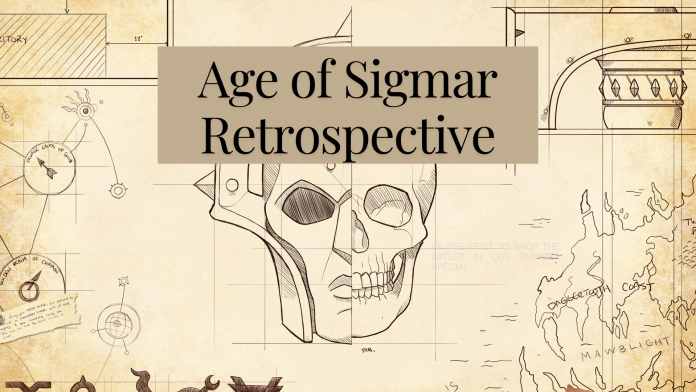I’ve been playing Age of Sigmar since its first iteration but never as much as I played its third edition. That’s for a few reasons, but easily the biggest is simply because it has been a very solid game through and through. As with any war game it had its rough patches but also some really wonderful moments. When thinking about whether I’d write this or not I definitely had a moment of “but I haven’t won any events” but then remembered that that doesn’t matter and at least a few of you are going to read this anyway. So here it is.
In case you missed our Spearhead Roundtable (spoiler: game is real good) where a few of us got to play the new game and talked about many things AoS, I’ll introduce myself again briefly. My first impression of wargaming was with Games Workshop’s Lord of the Rings game in the mid-2000s when I was about 11 or 12 years old soon after picking up 40k with Battle for Macragge and then Battle for Skull pass which started a life-long love all things dwarf. After moving to the UK for University and getting back into “the hobby” after a 5 year hiatus (thanks Ben) I got a job at the local Games Workshop store part-time. In 2015. When Age of Sigmar came out. You can imagine just how fun of a time that was.
Anyone around and playing it at the time knows it was a mess but we still had fun with it, even while waiting a bit over a year for points. Anyone remember the fan-made “warscrolls” balancing system? Hell of a time. The coldest take around is that this game has come an incredibly far way since then and has really become its own, unique, system and setting.
If you couldn’t tell, I’m a fan.
Starting Off, My Armies
Third edition AoS is not a singular, simple thing. It’s come a pretty far way just in the last three years with Generals Handbooks, Battlescrolls, and a slew of new army books including a basically-new-army with Cities of Sigmar being refreshed so heavily.
My collection of Age of Sigmar armies at the dawn of third edition included a lockdown-project of Kharadron Overlords painted in something resembling an army and then a built but not-yet-painted Fyreslayer army. Dwarfs are great. The former have only seen a tabletop about a half dozen times and the latter became my mainstay army over the last three years until I picked up Gloomspite Gitz last November ahead of the Brotherhood Teams event in January.

Fyreslayers have been in a rough spot the entire edition and really for about as long as they’ve existed. They suffer from the same general issues as dwarfs in any fantasy game, being quite slow but without the normal advantages of ranged output via artillery or shooting. Auric Hearthguard had a place, briefly, during the first General’s Handbook but haven’t seen the table except to fill Battleline as cheaply as possible. They are tough, though, and I’ve generally had a good run of them up until this latest General’s Handbook with just one Magmadroth (often not even taking it), bricks of Hearthguard Berzerkers, a small Vulkite unit for the battle tactic, and of course a smattering of 5-10 foot heroes. Or more. Being the only army to be able to extend to over seven heroes (a couple can go up to seven, just, I believe) has been fun. It’s definitely an unforgiving army, though. Messed up your placement and don’t have enough contingency heroes keeping those Hearthguard wholly within 9″? Well, now they’re dead and you’ve lost the game because of it. Some players do lean on the Oops All Droths list but I’ve only got one painted and I really haven’t had any motivation to paint more either.
One of my favourite moments of all of third edition, still, was one of my games during a teams event at the London Grand Tournament – even though the rest of the event was pretty awful this one game ruled. Playing against Lumineth Realm Lords during the first Generals Handbook, with all second edition battletomes still, and managed to tie up three different elf units with a single grimwrath berzerker, placed perfectly to be able to attack one of them while keeping the other two just within 3″ of him. Because of the Lumineth rule at the time his units were stuck in formation to only pile in 1″ each phase and only in range to throw a handful of attacks at him. That lasted for like three rounds of combat until he died, mulching through numerous aelves in the process. Ruled.
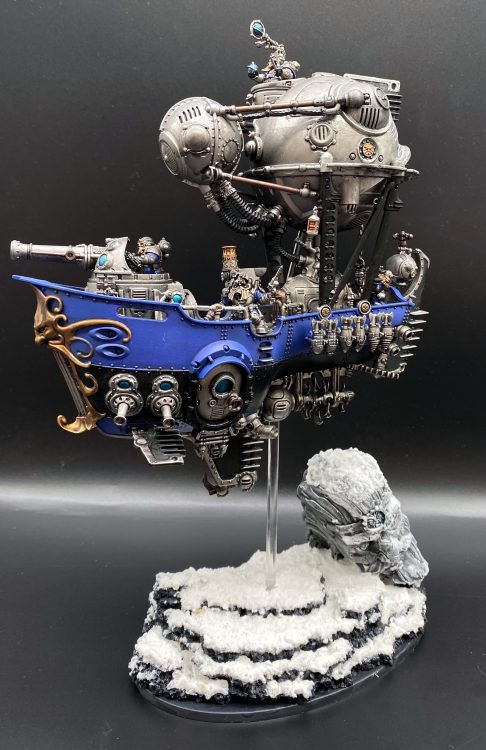
On the other hand, Kharadron Overlords or “the other dwarfs” of Age of Sigmar (sorry, not sorry Dispossessed, you hardly exist) have the opposite problem. It’s always been weird to think of any kind of dwarf army as a glass cannon but between their speed and short-ranged guns they really are. Their third edition book helped a lot in giving them more of a melee presence and more play around the table but they still lacked staying power and often had a hard time at actually taking and holding objectives. The way you win the game. People have definitely gotten the army to work, turns out simply removing the enemy from the table makes objectives pretty easy to score. Not an army that I’ve often wanted to take to my club’s games night on a Friday just for general lack of enjoyment from that kind of game. Shame, really, and very hopeful that they at least become more interesting to play with and against in fourth edition.
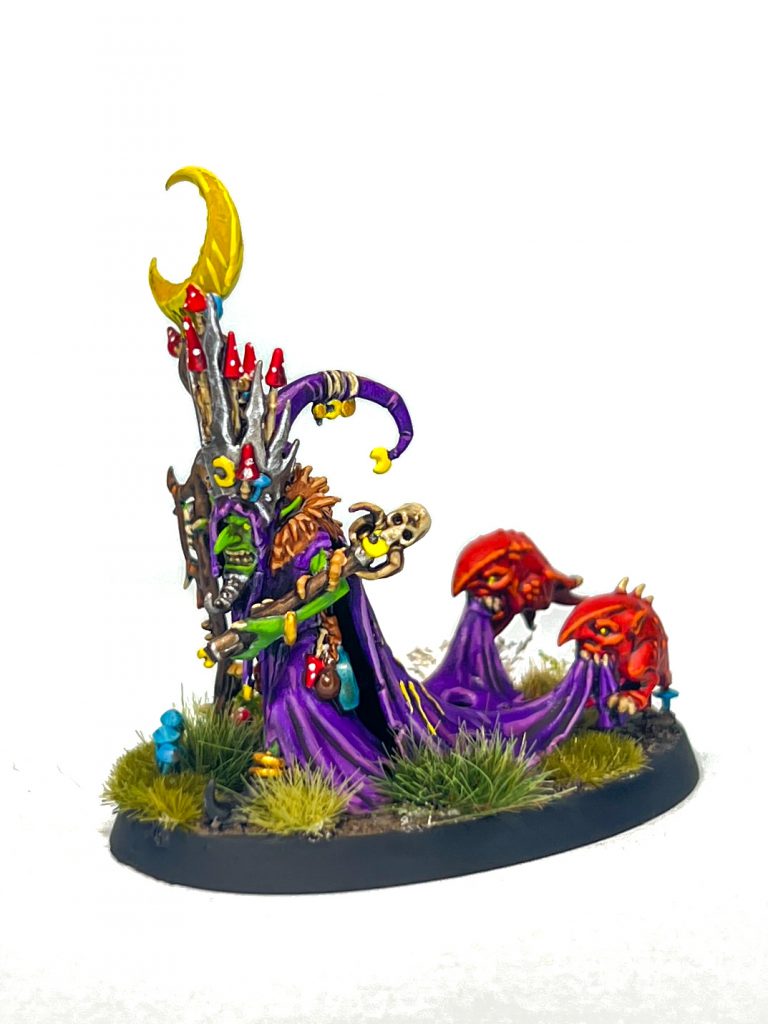
Lastly I started a Gloomspite Gitz army in November of 2023 like I said above. Gitz, or goblins, are a natural enemy to dwarfs in every fantasy setting so it almost felt right to start? Having painted up Trugg for review when he came out and then eyeing up Rockgut Troggs it didn’t take much convincing to pick up an army. Played a lot of games in the following weeks with a lot of bare plastic while figuring out an army that edged on competitive for Brotherhood; a teams event with a bunch of friends and very cool people that I had a blast with. After painting many dark, often drab, armies it was a lot of fun on the hobby-side to push out more colour and brighter tones and I’m very happy with how they came out, especially my Skragrott and Gobbapalooza. Even got them all painted up within about 6 weeks! Reading through the battletome, having not really ever played against the army, I was also just amazed at how many incredibly good units and combos this book had. I decided on a Trogg-heavy army in the end with some gobbos and support units, usually no squigs. Here’s where my bragging comes in: with 25 games played with the army I’ve only lost 3 games. First to new Flesh Eater Courts, brutal game and I’ve never picked up troggs from the table faster, then to Sylvaneth at Brotherhood against a great Team Wales player, and most recently to RagnarokAngel’s Ossiarch Bonereapers which I underestimated and could not scratch, even with Rend -3 Troggs. Not a bad winrate though, including a couple teams events and an RTT that I placed 2nd in.
The Good
There’s been a lot of good in third from positive changes that happened during the edition like weapon range increases, Generals Handbooks which allowed units to fight further than they normally might, and finally finally making foot heroes safe from shooting. By far the best thing that this edition did though was really shake up some Battletomes that needed it and I don’t mean in a way that made them better. Tome after tome the lore and the “fluff” of an army just really shone through in their rules and that’s just incredible. This was often met with harsh backlash from small online communities and the Nurgle battletome especially comes to mind here specifically. Some of these armies, like Nurgle, really did not play on the table like you’d expect them to. I’m a big believer that miniature game rules should reflect what a model’s lore is but more importantly what it looks like it is capable of doing. Big bloated half-dead mostly-rotten things never should have been sprinting across the table as one of the fastest armies! It was silly! There’s plenty of silly to be had in Age of Sigmar but within its own lore and at least it makes sense on the tabletop. My biggest hope, and from what I’ve seen so far, is that this rings true through fourth edition.
As far as Generals Handbooks go the absolute best one we had in all three years was the foot-hero one, just before the current and last GHB of third edition. I know a couple armies or monster-skew lists struggled a bit here but there’s always been at least one army that struggled during a GHB season. I was, of course, playing Fyreslayers at the time and the army finally felt solid. Then we moved onto a magical-dominant season and I started a Gitz army that had 6 casts and dispels…
The Bad
Now with any edition of any wargame there have been some glaringly bad times too. Many of these were actually fixed via points changes or warscroll re-writes but there’s one mechanic that just stuck around and in some ways got better battletome after battletome: rally. Was the amount of wounds/models “fixed” part way through? Yes, it was, and that was good after having played a game early on where I watched two Stormcast dragons spawn back to life on a very lucky roll. Yuck. While the amount you can bring back has decreased on a lucky roll each battletome added some kind of way of using it more reliably, or more often, etc etc etc which was…not good. Every army seemed to have some access to a 4+ or 5+ Rally by the end. A mechanic, really, that should belong to Death armies only not Fyreslayers reviving five Hearthguard Berzerkers every turn cause a guy holding a big metal banner did some shouting. Have I used it and abused it where possible to win games? Yes, absolutely. Use the tools you have.
“Normal” heroes. The regular ones that don’t have giant mounts or aren’t monsters themselves. The edition ended with them in a much better spot but it took nearly all three years to really get there. I can’t describe how many early games of AoS third that I played with Fyreslayers that came down to “oh you have shooting, okay I’m not winning this now” because of how the army relied on these heroes and how easy they were to pick off at range. The battletome helped Runefather and Runesons at least and finally near the end none can with ranged weapons at least outside of 12″ but kind of too little, too late. It’s been interesting seeing some design ideas be fleshed out with abilities to strike with a hero and a unit back-to-back making them feel like they’re commanding units around them. However the biggest issue with separate heroes and units is charge rolls, especially on slower armies like Fyreslayers or Maggotkin of Nurgle where you need your heroes near your units but often are having to make two separate 8″ or worse charges to get there. I’d have loved to see an ability or even a command, it’d be worth the CP cost, to bring a unit along with a hero’s charge roll.
The longer the edition went on for the more difficult it became to get anyone into it, fresh, from the start. When you’re playing it week after week you don’t realise how much information you simply retain with things like heroic actions, monstrous rampages, etc etc etc adding on all of the unique army book versions and it’s just too much to get into casually. As much as I liked the idea of heroic actions when the edition dropped it really was, almost always, just trying to get a command point that you might not even use on a 4+ unless you really needed one guy to Finest Hour. This is something that could have just been skipped over entirely and from the looks of it, might be gone from fourth edition which would be good and fine.
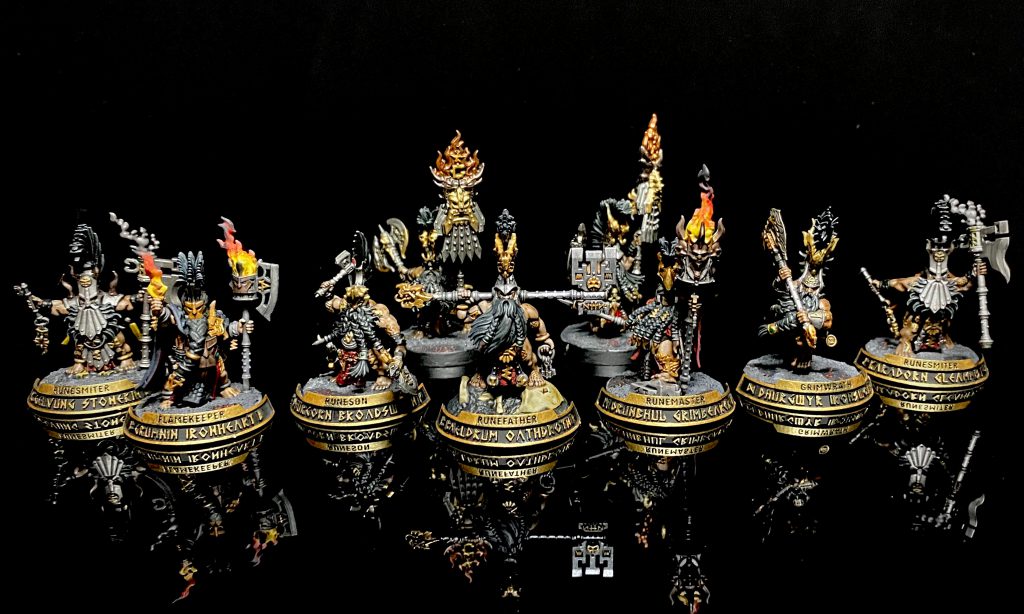
The Ugly
I’m putting here the shorter-termed “bad” things that happened, or just weird mechanics that aren’t necessarily “bad” but could use some touching up. This is my article; I’m not holding myself to that strict of a structure really.
First things first is Priests. As someone that got to use and abuse the power of Priests throughout the edition, especially with Magmic Invocations being strictly better than Endless Spells for most of the edition, they are just weird. Many other games (like Conquest) just treat Priests as Wizards in all mechanical ways on the table. Their powers come from their gods or whatever else instead of innate magical abilities but being mechanically the same means there can be counter play to them. The worst implementation of this was tying Magmic Invocations to the easiest Grand Strategy in the game; Fyreslayers at this point were struggling to do well anyways but it was still weird. Having to explain that “no, you can’t interact with my invocations in any way since you don’t have a Priest” never really felt good. That sort of total lack of interaction for most armies is just not fun at all. Fourth edition giving all of these things wounds and mundane ways to kill them is a fantastic!
Bounty Hunters. Now, I didn’t actually play any games during this season, at all, for personal reasons. Specifically because I was working East Coast US time zone hours while living in the UK on a contract for those 6 months (almost exactly) which killed my social and gaming life; I can’t really recommend doing that. Even so this was a very weird time in AoS gaming where units just….had double their normal damage against units that most armies were normally relying on? I might not have played it but I did a lot of list writing and speaking with friends that did and it was just…strange. The whole six-month GHB period really felt like the design team throwing caution to the wind to try new things and I’m very glad this went away swiftly.
Some of the core mechanics of the game were also just strange for a while. Unit coherency in previous editions caused issues leading to units being strung out in ways that looked ridiculous. The coherency rules sort of fixed this, a little, unless your unit was on a 25mm base then you just had to make little knots at either end and you still could but at least they all had to be base-to-base. What it messed up however was coherency for chunkier models that you by in 3’s and made some cavalry units look very strange with one guy at the back straddling sideways to make it work. This was fixed so that units of six didn’t need to be in coherency with 2+ models so could walk up in a line, helping things like Rockguts, Varanguard, and Gore Gruntas. Glad to see this number sticking around for fourth edition coherency rules too!
Lastly I just want to talk about Faction Terrain and just how ludicrously inconsistent it is. If your army has it it’s completely free to take and next to impossible for your opponent to do anything about. When your army does have one it has either limited/minimal use or it’s entirely necessary to own and take to every game. The former is fine, it’s free so whatever but the latter becomes an issue when your faction terrain piece is simply out of stock everywhere for months on end leaving you with something you have to buy to be able to play your army but also unable to get.
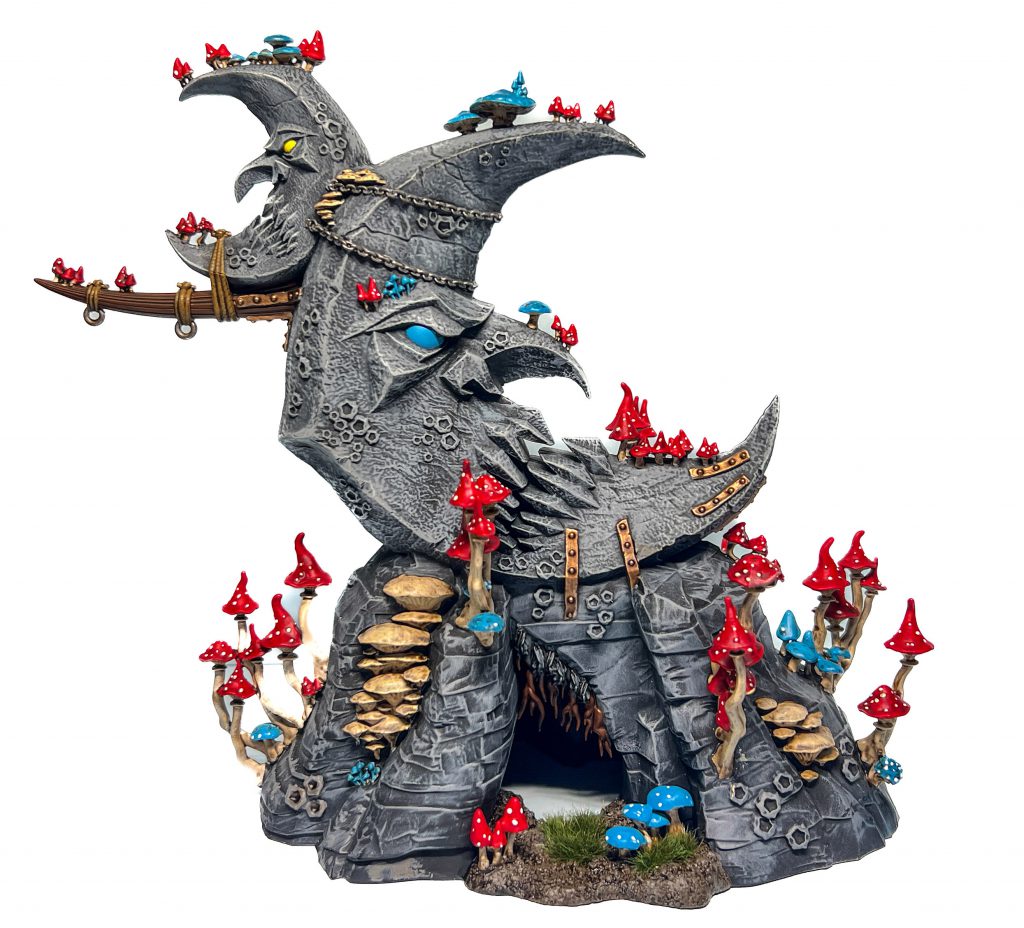
Moving Ever On
Games Workshop really has set our expectations of churn in recent years with a very obvious three-year cycle of 40k and Age of Sigmar editions. I am very glad to see that the six-month rotations for Matched Play is a thing of the past with what looks like yearly periods now. Not many people actually play enough to warrant changing so much so often. As someone that does play quite a lot it was still too much to keep up with and I don’t even mean just competitively!
Age of Sigmar’s third edition was good. It really was. I know many people that jumped in right at the dawn of third, some that stuck with it and others that bounced off for the reasons stated above. I enjoyed just about every single game that I played and the only ones that I didn’t were because of the person on the other side of the table, not because of the game itself in any way. I said goodbye to third edition a few weeks back with an RTT at Ragnarok Hobbies, won all three of my games with Gitz, and even took home my second-ever paint award for my Shroomancer; this is the RTT mentioned earlier where I placed 2nd for simply not scoring enough in one game, my mistake clearly. A great goodbye to an overall great edition. Hard to ask for more, really!
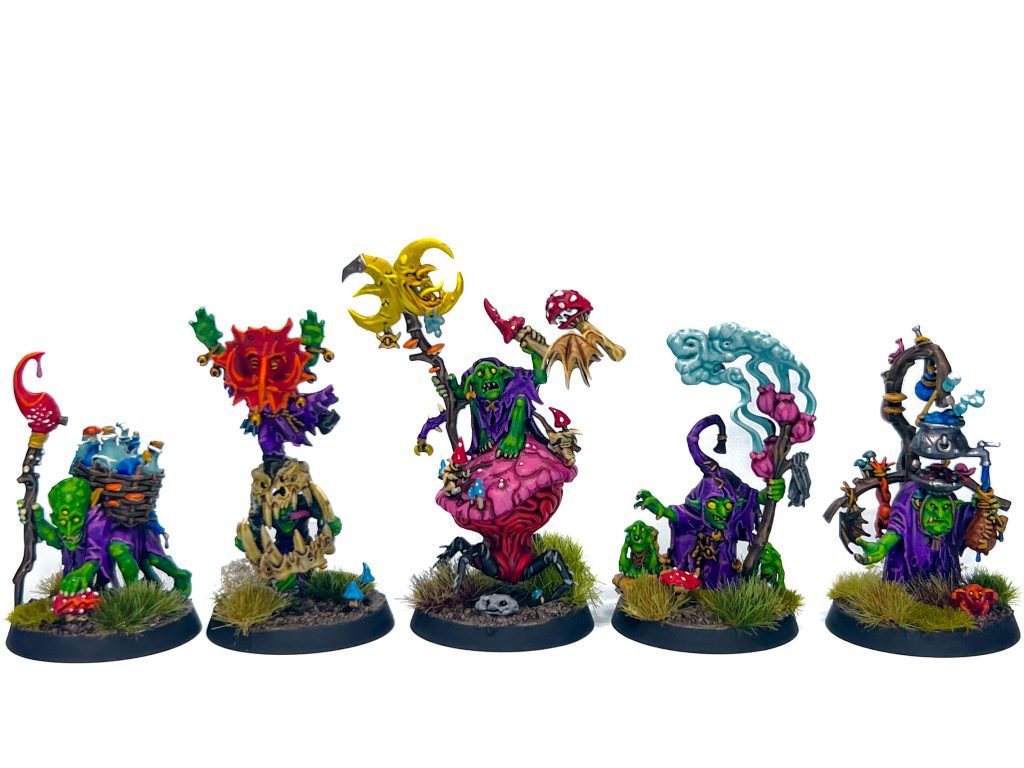
Roll on fourth edition!
How have you enjoyed third edition? Anything that I missed that you either really liked or disliked? Leave a comment down below. Anything else email in to contact@goonhammer.com
